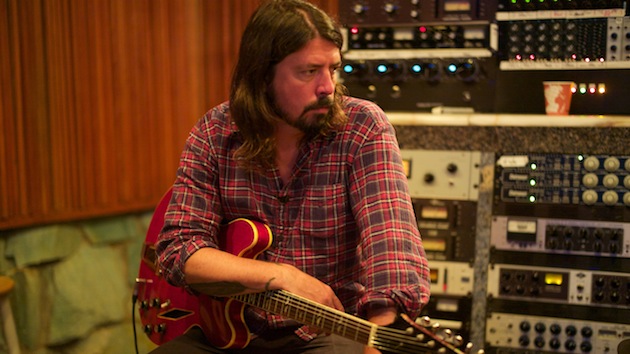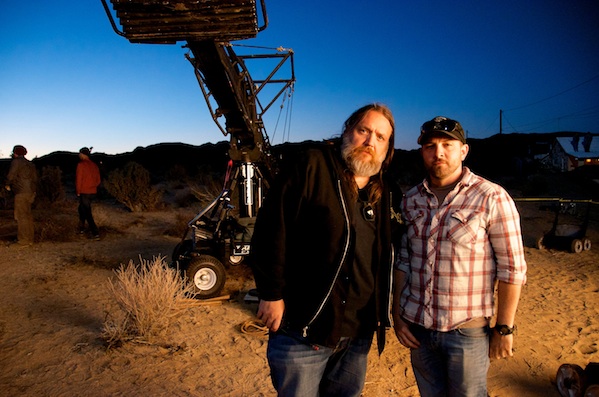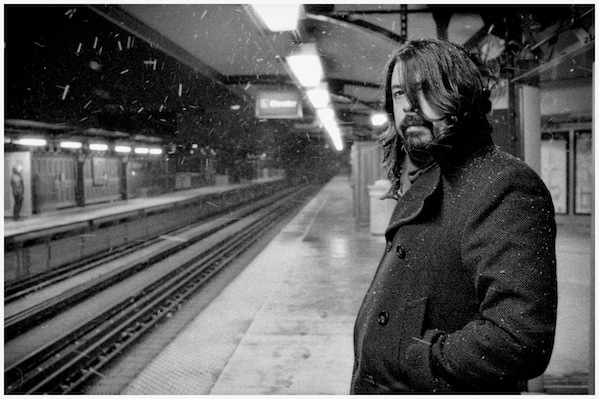Recording the Band's Eighth Album and a Roadmap of American Music
The upcoming HBO series Foo Fighters Sonic Highways is more than just a documentary about the band's eight-city journey across America to record their eighth studio album in twenty years together. Directed and narrated by Foo Fighters founder Dave Grohl, and executive produced by James A. Rota and John Ramsay, the series is as much about the fellow musicians, sound crews and iconic American cities that have given shape to the rich cultural complexities of an ever-evolving American music scene, the "sonic highways that connect all these people and places together," Grohl says in a trailer.
It's equally important, Bonnie Raitt tells Grohl along the way, that this musical map be experienced as a living history, and Grohl digs deep through interviews and interactions with prominent and lesser known musical legends to uncover the cultural underpinnings of today's most popular music. He also takes that message to heart and transforms pieces of his conversations into lyrics for one of the songs on the new record.
Rota (left) and Ramsay on set at Joshua Tree. (photo top and above: Andrew Stuart)
Rota and Ramsay, who also produced Grohl's directorial debut, Sound City, were both on the road with the band throughout the eight-city tour, netting some 500+ hours of performances, behind-the-scenes footage and local-color b-roll. Ramsay, a co-founder of Therapy Studios, also supervised post. Shot primarily with the Red Epic, the series also features verité scenes shot with the Canon C300, Canon EOS-1D C, and several Blackmagic Pocket Cinema Cameras.
Rota and Ramsay knew from the start that each setup would come with its own limitations and challenges. They devised a flexible yet rigorous mobile kit featuring six Blackmagic Design HyperDeck Studio Pro SSDs and a Teranex 2D Processor, backed up by a MultiDock that also managed their media. "On Sound City, we were just set up in the back and stayed put," Rota says. "But for this show, we needed something that would be flexible because we were going to be moving from place to place. We also didn't do any advance location scouting, so we didn't really know what we were getting into when we arrived. When we moved in, we knew we'd likely have a footprint of about two feet squared if we were lucky. We just had to take what we got, and that was part of the challenge. But we were pretty confident that whatever situation we walked into we'd be able to cover it well and not be in the way of what the band needed to do. And that was the main priority: to never interfere with the process of them recording their album."
With the musical process in play, Grohl and the band had to be ready for anything, as did Rota and Ramsay behind the camera. "In the New Orleans episode in Preservation Hall," says Rota, "they literally had to build a recording studio from scratch. They were rehearsing a song when Dave wanted to swing open the doors take it out into the street. Without that flexibility and compact size of our setup, we would have missed that moment completely." The band's reputation for doing things other bands would never do led to a very collaborative environment in the studio, he adds. "They go out on a limb a lot more than other bands for certain things and this particular project, which is really putting them out there and exposing them so much definitely was something that they had to take into consideration when signing on to this. It was pretty intrusive. But having said that, they didn't seem to have any real problem with it at all."
Starting in Chicago this January, when the country was in the grip of the famed Polar Vortex, cameras continued to roll to catch any number of similar moments on the road, sending feeds via HDMI and SDI directly into the dual SSD recording slots in the HyperDeck Studio Pros. Grohl, Rota and Ramsay checked dailies mostly for technical issues, Rota says, to make sure the footage was usable. "Dave's really good at remembering details, and because he did all of the interviews, he remembered all the things that people said. Obviously he was also in the studio the whole time, so as the band tracked different parts and the cameras rolled, he knew exactly what we had."
(photo: Kenny Stoff)
Rota says careful and meticulous pre-production planning kept everything on track. "We pretty much kept it all on budget and moving forward from city to city," he says. "We did have a second unit out in all the cities getting the b-roll we needed. We have a limited budget because it's a lot of episodes to do in a short amount of time, plus we were locked into the band's recording and now promotional schedule for the new album. There were always a lot of moving parts to coordinate and we really didn't have a lot of flexibility on that front."
That tight schedule extended to post at Therapy Studios (therapystudios.com), where the post team is cutting each episode in Avid Media Composer, grading in Autodesk Lustre and finishing the conform and DI in Flame. The animated and title sequences, as well as photo animations and collages, were done in Adobe After Effects. "We'll actually still be working on episodes after the first show airs," says Ramsay. "Because it's such a pretty compressed delivery schedule, it can be kind of harrowing at times."
But the joy of discovery, he says—for the band, for the audience and for the producers themselves—has been well worth the intense effort. "The series is a lot more than people might initially expect. If you think it's just a show about a band recording a record, you'll be very pleasantly surprised. In every city there was a musical discovery of some kind and something new we all learned." Adds Rota, "You don't realize how much some of these bands have influenced what has come after them worldwide. In his interviews, Dave has a real talent for bringing out the deep cultural significance a lot of these lesser known bands actually have in our country and beyond."
For all its built-in fan appeal, Rota believes the show will be popular with a much wider audience. "The beauty of having a band with a name also means more people will come to it than might have otherwise," he says. "But I think that's also because it feels like so many kinds of shows rolled into one: it's a music show, but also a travel show and an important record of our musical roots."
Foo Fighters Sonic Highways premieres October 17 at 11 p.m. on HBO.
Crafts: Editing Post/Finishing Shooting
Sections: Creativity
Topics: Article Project/Case study Blackmagic HyperDeck Studio Pro Blackmagic MultiDock blackmagic pocket cinema camera Canon C300 Canon EOS-1D C red epic Teranex 2D Processor
Did you enjoy this article? Sign up to receive the StudioDaily Fix eletter containing the latest stories, including news, videos, interviews, reviews and more.













Great article! It’s nice to have such in-depth information about this show’s production details.
helpful